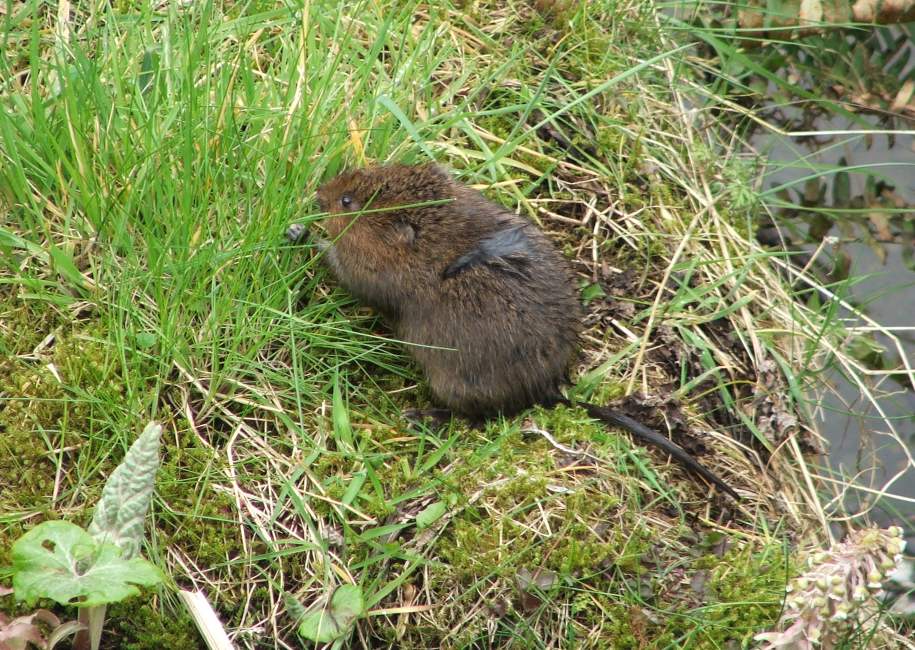Mammal Identification
Water Vole Arvicola amphibius
Identification features

- Small-sized mammal
- Blunt muzzle
- Small incospicuous ears
- Fur is a rich dark brown all over the body
- Seen near or in water
- Tail is slightly furry and is about 60% of the length of the body and head
Water voles are mostly herbivores and are associated in Derbyshire with ponds, lakes, canals, streams, rivers and the gritstone moors.
Other identification clues
Droppings

Being herbivores water voles produce lots of droppings. They use them to mark their territory and can be found in large piles (latrines) in prominent places along water side habitat. They are 'tic-tak' shaped having blunt ends at both ends. They are 8-12mm long and 4-5 mm thick. They do not smell.
Sounds
Water voles can sometimes be heard entering the water with a 'plop'.
Burrows
Water vole burrows can be found at the water side along streams and canals. They often have grazed lawns near them and can easily accessed from the water. Some burrow entrances are below the water level.
Feeding remains
Water voles eat plants and leave distinctive clues. Long linear leaves have teeth marks. Short sections of rush and unwanted leaves can be found in piles of vegetation.